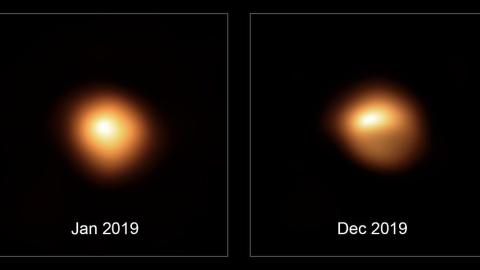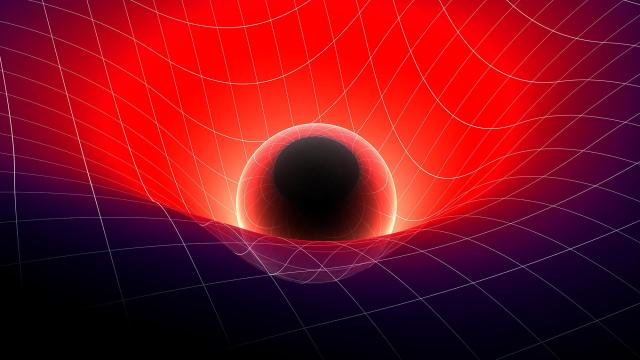The “Great Dimming” of Betelgeuse explained

By ESO/M. Montargès et al. - https://www.eso.org/public/images/eso2003c/, CC BY 4.0, https://commons.wikimedia.org/w/index.php?curid=87252681
- Last year, Betelgeuse dimmed by a third before returning to normal.
- A number of studies blame some combination of cooling and dust.
- The star is not set to explode anytime soon, much to the disappointment of many.
One of the most notable stars in the night sky is Betelgeuse. Typically the tenth brightest star in the night sky, it is well known for its red color and prominent place in the constellation Orion. Its name, which like many other stars comes to us from Arabic, translates to “the arm of the giant” or “the armpit of the great one,” which is an excellent description of where it is located in that constellation.
As a semiregular variable star, it can undergo shifts in its brightness of varying intensity for irregular lengths of time. Scientists were not entirely surprised by an extended dimming of the star between November 2019 and March 2020. However, the magnitude of that dimming, a 35 percent drop, was remarkable — so much so that more than a few people began to speculate that the star was about to explode (or “go supernova” in astronomical parlance).
Astronomers all over the world turned their telescopes toward Betelgeuse in the hope of figuring out what was going on. A few recently published papers provide some explanations.
A tale of two studies
One recentpaper, published in Nature Communications by a team composed mostly of Chinese scientists, argues that the dimming was caused by a large, dark, cooler spot on the star.
To determine if the star was cooler during its dimming, the team devised a method for measuring titanium oxide and cyanide molecules in thestar’s spectra — an analysis of the intensity of various wavelengths of light given off by a star that can reveal things like temperature, chemical composition, and mass. Titanium oxide and cyanide are more common in cooler stars, as they tend to disintegrate in hotter ones.
Their data suggested that Betelgeuse cooled by 170 Kelvin, from 3646 K (6103 F°) to 3476 K (5797 F°) during the dimming period. They suggest that such a dramatic cooling could be caused by a dark spot on the star, a well known phenomenon often caused by large convective cells on the stellar surface.
Because it is unlikely that the entire star cooled that much, the researchers further suggest that the dark spot itself was fairly large and as much as 340 K cooler than the rest of the star. Some other researchers concur with this proposal, but this is not the only potential explanation.
Anotherstudy, published in Nature and conducted by an international team of researchers, suggests that a combination of dust and cooling was at play. They propose that this dust patch was caused, in part, by a cool patch similar to the one discussed in the aforementioned study.
Observations from shortly before the dimming period began suggest that some mass, perhaps in the form of a gas cloud, was lost from Betelgeuse. The formation of a cool spot could allow the dust in the cloud to condense and clump together, obscuring the star. The star would regain its brightness after the cool spot dissolved and the dust blew away.
The authors further conclude that the models for cooling and dust do not conflict and that a combination of the two best fits the observations. While differing on a few details, including the overall importance of dust, the two studies largely agree on how much Betelgeuse cooled and how that cooling impacted our ability to see it.
Betelgeuse! Betelgeuse! Betelgeuse!
The star, while having long since returned to a more typical brightness, continues to fluctuate in brightness, though nothing on the scale of the previous “Great Dimming” event.
Despite speculation that the star was about to explode, it is not expected to do so for another 100,000 years. However, when it does, it is going to die in spectacular fashion — likely shining brighter than Venus for a short time before collapsing on itself and turning into a neutron star or black hole.
If you’re going to pick a lucky star, maybe don’t pick that one.





